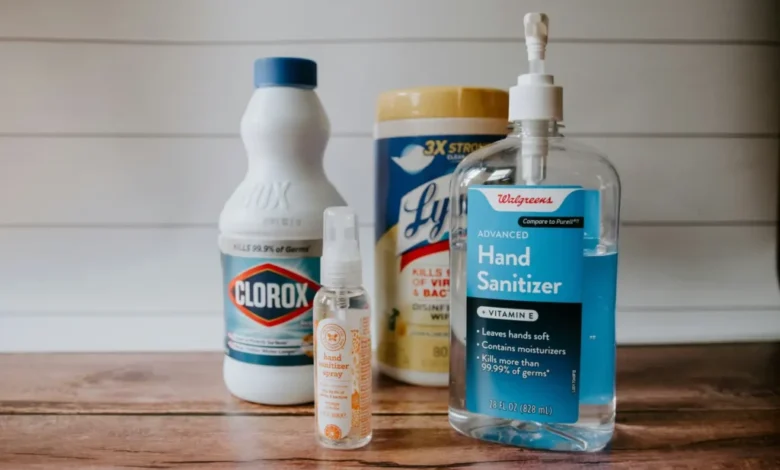RV Fresh Water Tank Sanitizer: Keep Your Drinking Water Clean and Safe on Every Trip

Keeping your RV fresh water tank clean is super important. That’s why using an RV Fresh Water Tank Sanitizer helps make sure your water is safe to drink, cook with, and shower in. Dirty water tanks can grow germs, bacteria, and even smell bad. This can make your RV trip less fun and even a little risky. But don’t worry—cleaning your tank the right way isn’t hard. You just need the right steps and a good sanitizer.
An rv fresh water tank sanitizer helps stop bad stuff from growing in your water tank. You don’t need fancy tools or special skills. In this blog, we’ll explain everything in a super simple way—just like how you’d tell a friend. We’ll show you when to sanitize, how to do it with bleach or safe cleaners, and how to keep your water fresh for every adventure. So let’s learn how to make your RV water tank clean and healthy!
What Is an RV Fresh Water Tank Sanitizer and Why You Really Need It
An rv fresh water tank sanitizer is a cleaning solution made to clean the tank that holds your drinking water in your RV. It helps kill germs, bacteria, and other yucky stuff that can grow inside the tank when water sits for a long time. If you don’t clean it, the water can smell bad or even make you sick. Nobody wants to drink or shower with dirty water on a camping trip! Using a proper sanitizer keeps your water clean and safe every time. It also helps protect the pipes and water pump from getting damaged. So if you want fresh water that tastes good and is safe to use, sanitizing your tank is a must-do task for every RVer.
How Often Should You Sanitize Your RV’s Fresh Water Tank?
You should clean your RV’s fresh water tank at least once a year, especially when getting your RV ready for spring trips. But if your RV has been sitting still for more than 2–4 weeks, it’s also a good time to sanitize. Bacteria can grow when water is left still inside the tank. That’s why cleaning it regularly is super important. If you travel a lot or live in your RV, you might need to clean it more often. Also, anytime the water smells funny or tastes weird, you should sanitize it right away. Keeping it on a regular cleaning schedule helps you avoid problems later. Think of it like brushing your teeth—just something you need to do to stay healthy on the road.
Best Ways To Sanitize RV Fresh Water Tank Without Any Special Tools
Good news! You don’t need any fancy tools to sanitize your RV fresh water tank. All you need is regular bleach or a safe tank sanitizer, a measuring cup, a clean funnel, and a water hose. First, you drain out all the old water from your tank. Then, you mix the right amount of bleach with clean water in a bucket. Next, you pour that mix into the tank through the water fill hole using the funnel. After that, fill the tank with water, turn on the water pump, and run the water through every faucet. This helps clean the whole system. Then just let it sit, flush it out later, and you’re done! It’s easy and keeps your water safe and fresh.
Step-by-Step Guide: How To Use RV Fresh Water Tank Sanitizer Safely
Step one is to turn off your water heater and water pump. Let the hot water cool, then drain it out. Step two, drain all the water from the fresh tank and pipes by opening the low-point drains under your RV. Step three, mix 1/4 cup of bleach per 16 gallons of water. Don’t pour bleach in by itself—always mix with water first! Step four, use a funnel to pour the mix into the water fill. Then fill the tank with water, turn on the pump, and open all faucets to run the bleach water through. Let it sit 8–12 hours if you can. Last, flush the system with fresh water until the bleach smell is gone. That’s it—super safe and simple!
Bleach vs. Eco-Friendly Cleaners: Which RV Fresh Water Tank Sanitizer Works Best?
Both bleach and eco-friendly cleaners can work well, but they are a little different. Bleach is strong and kills bacteria really well, but it smells bad and must be rinsed a lot. It’s also a bit rough on the environment. Eco-friendly sanitizers are made with natural stuff, so they’re gentler on your tank and safer for nature. They usually don’t smell much and are easier to rinse out. But some eco-cleaners cost more and might not kill as many germs as bleach. If you want something cheap and strong, go with bleach. If you want a cleaner, green choice, use a natural RV tank sanitizer. Pick what fits your needs and always follow the label directions to stay safe.
Easy DIY RV Fresh Water Tank Sanitizer Method for Beginners
If you’re new to RV life, don’t worry—cleaning your tank is easy. First, get your supplies: bleach (non-scented), a measuring cup, a funnel, and a hose. Then turn off the water heater and drain your fresh water tank. Mix 1/4 cup of bleach per 16 gallons of tank size. Always add bleach to water, not the other way around! Pour the bleach mix into the fresh water tank using the funnel. Fill the tank with water, turn on the water pump, and run water through every faucet. Let the bleach water sit in the tank overnight or at least 8 hours. In the morning, drain it all and flush with clean water until the bleach smell is gone. That’s it—your tank is clean!
Conclusion
Sanitizing your RV’s fresh water tank might sound hard, but it’s really just a few easy steps. With the right tools and a little time, you can keep your tank clean and your water safe. Clean water helps your family stay healthy and happy while you explore the great outdoors.
So next time your RV sits for a few weeks or you get ready for a new trip, take a moment to use an rv fresh water tank sanitizer. It’s a simple task that makes a big difference in your camping experience. Clean water tastes better, smells better, and is better for your whole RV.
FAQs
Q: How much bleach should I use to sanitize my RV fresh water tank?
A: Use 1/4 cup of bleach for every 16 gallons of water your tank holds.
Q: How long should I let the bleach water sit in the tank?
A: Let it sit for 8 to 12 hours for best results before flushing.
Q: Can I use eco-friendly products instead of bleach?
A: Yes! Just make sure the product is made for RV fresh water tanks.



